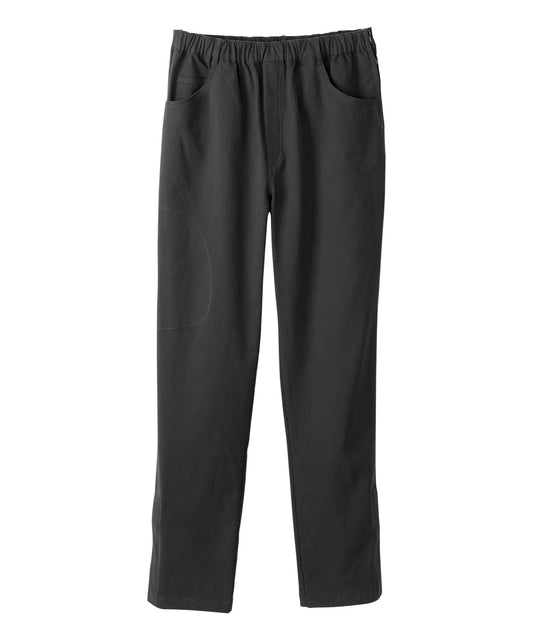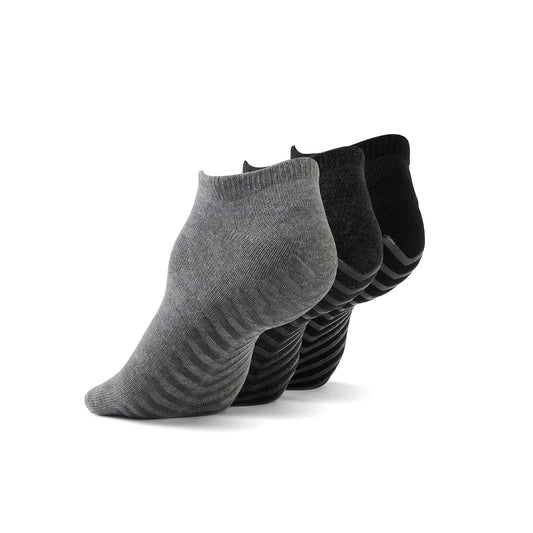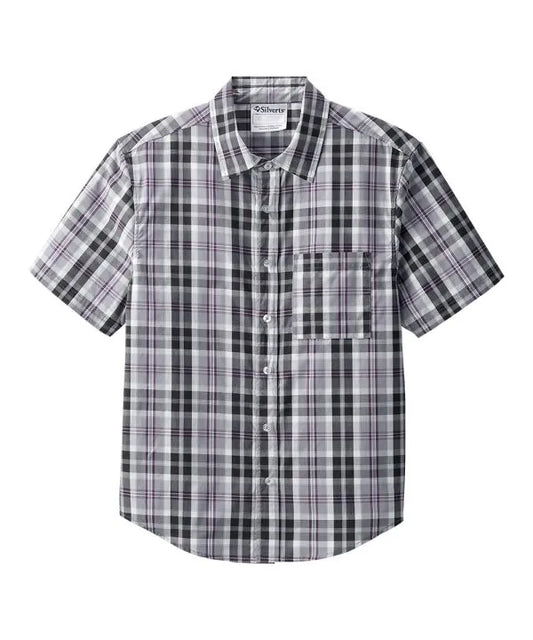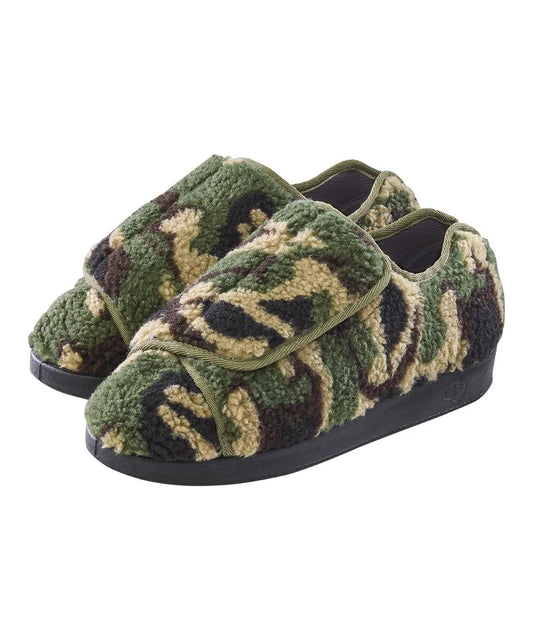By Zarif Ahmed
When you're recovering, whether from surgery, illness, or injury, your energy is precious. The simplest tasks can suddenly feel monumental, and dressing, something we often take for granted, becomes a daily hurdle.
But here's the truth: the clothes we wear during recovery can make all the difference.
Not just in comfort, but in dignity. In control. In self-expression. Adaptive clothing is more than just easier garments—it's the bridge between healing and hope, between frustration and freedom.
This guide walks you through ten must-have adaptive clothing items that help you or a loved one recover faster, safer, and more comfortably. These aren't just clothes—they’re tools for healing.
Adaptive Tops and Bottoms: What to Look For
Think comfort meets accessibility. Adaptive tops and bottoms are the foundation of a recovery wardrobe. Here’s what separates the essentials from the rest:
Magnetic Closure Shirts

Imagine regaining the ability to dress yourself, without needing help. Magnetic closure shirts make that possible. They look like any other dress shirt, but hidden beneath the placket are discreet magnets that snap together effortlessly.
These shirts are lifesavers for individuals with limited hand dexterity from arthritis, Parkinson’s, or post-op recovery. June Adaptive’s men’s and women’s lines offer clean, classic styles that blend seamlessly into any wardrobe.
Anecdote: One caregiver shared how her father, recovering from a stroke, smiled for the first time in weeks when he managed to button his own shirt—thanks to magnets. “It wasn’t just clothing. It was independence.”
Elastic-Waist and Side-Zip Pants
For those healing from hip, abdominal, or leg surgeries, side-zip pants simplify dressing while standing or sitting. Look for pants with full-length openings, Velcro closures, or elastic waistbands for maximum flexibility.
June Adaptive offers trousers with side zippers designed for seated wear, avoiding pressure points and making dressing a one-person job, even post-surgery.
Adaptive Skirts and Lounge Bottoms
For people who prefer skirts or looser styles, adaptive skirts with wide elastic bands or wrap styles provide both elegance and ease. Look for options that accommodate abdominal binders, casts, or mobility aids.
Post-Surgery Underwear and Pyjamas That Make Dressing Easier
We rarely think about our underwear—until we’re recovering. When mobility is limited, every layer matters. From catheter-compatible pyjamas to front-closing bras, these essentials redefine comfort.
Seamless Underwear and Soft Bras
Tagless, high-waisted, and made with soft, breathable fabric, these underwear styles reduce friction and avoid pressure on surgical sites or sensitive areas.
Front-closing or magnetic bras are particularly useful after shoulder or chest procedures. Instead of painful stretching or lifting, a simple clasp at the front brings ease back to the routine.
Real-world tip: Choose underwear made from bamboo or cotton blends—they’re naturally antibacterial and gentle on post-op skin.
Velcro-Front Pyjamas and Adaptive Nightgowns
Velcro PJs and open-back gowns remove the struggle of getting dressed or undressed while lying down or using mobility aids.
For bed-bound patients or those with drains or IV ports, these adaptive pyjamas allow for rest and medical care without constant clothing adjustments. They're also easier on caregivers, reducing physical strain during daily routines.
Compression and Post-Surgical Garments
Don’t overlook the value of specialized recovery wear, like post-mastectomy camisoles with drain pouches or compression garments with side zippers. These are critical for proper healing and minimizing swelling.
Zip-Up Dresses and Tops: A Comfortable Alternative
Sometimes, you want to feel a little more put together—even while healing. Zip-up dresses and adaptive tops offer that blend of beauty and practicality.
Magnetic-Zipper Active Jackets

These jackets are a hit for those going to physical therapy or outdoor walks. With hidden magnetic zippers and a soft inner lining, they’re easy to put on without sacrificing style.
They’re perfect for both hospital discharge days and early recovery appointments, giving the wearer a confidence boost and physical ease.
Zip-Up or Snap-Front Dresses
Ideal for people who struggle with lower body dressing or need assistance, these dresses allow full range of motion and are often compatible with seated or reclined positions.
Pro Tip: Choose dresses with pockets or kangaroo pouches to hold small recovery essentials like medication, tissues, or a phone.
Ponchos and Easy-Layer Shawls
No arms through sleeves. No tight necklines. Just a warm, cozy hug you can throw over your shoulders in seconds. June Adaptive’s plush shawls are perfect for wheelchair users or anyone wanting an extra layer without the hassle.
Adaptive Footwear for Improved Stability and Comfort
Good footwear is essential, especially during recovery when balance and strength may be compromised.
Zip-Around and Wide-Entry Shoes
Brands like Billy Footwear and Zappos Adaptive offer stylish shoes that open completely from the top, allowing the foot to slip in without bending or tugging. This is critical for people with braces, casts, or swollen feet.
Many come with orthotic-compatible insoles, too, meaning comfort and support in every step.
Non-Slip Indoor Slippers and Socks

June Adaptive’s ultra-soft crew socks with grip soles are a small but powerful tool in fall prevention. Whether you’re recovering in a hospital or at home, these help prevent slips on tile, wood, or vinyl floors.
Pair them with indoor recovery slippers—soft, warm, and secure—to maximize safety.
Velcro or Magnetic Closure Shoes
Ideal for anyone with limited hand function, Velcro and magnetic shoes let users avoid laces and focus on walking with confidence.
The Best Accessories for Easy Dressing
Sometimes it’s the little things that have the biggest impact.
Magnetic Belts
They look like classic leather belts but fasten with a simple snap. Ideal for people who’ve lost finger dexterity or simply need less fuss in the morning.
These belts are great for returning to work post-recovery or just feeling a bit more polished during everyday wear.
Lap Blankets with Pockets
For people recovering in wheelchairs or recliners, lap blankets with built-in pockets offer both warmth and utility. They can hold tissues, phones, or medications, keeping essentials within reach.
Compression Gloves and Mobility Aids
Recovery from hand surgery or carpal tunnel? Compression gloves reduce swelling, while dressing aids like button hooks and zipper pulls give users more independence during recovery.
The Emotional Side of Dressing During Recovery
Dressing isn’t just a functional task—it’s emotional.
Every zip, every snap, every piece of clothing that goes on without help says: “I’m getting better.”
Many people describe their first independent dressing moment post-surgery as a major emotional milestone. Whether it’s sliding into a pair of side-zip pants or doing up a magnetic jacket, these small victories matter deeply.
As one stroke survivor shared:
“When I finally put my pants on without calling for help, I cried. I felt like myself again for the first time in months.”
That’s the heart of adaptive clothing. It restores what illness or surgery temporarily takes away—agency, autonomy, and identity.
For Caregivers: Clothing That Makes Support Easier
It’s not just the patient who benefits—caregivers do too.
Adaptive clothing reduces dressing time, physical strain, and awkwardness. For family members helping a loved one at home, it means fewer frustrating mornings and more peaceful moments together.
Garments that open in the back, have shortened lengths for wheelchair comfort, or avoid tight bands drastically cut down on the time and effort it takes to dress someone safely and respectfully.
A Caregiver’s Perspective: Watching Recovery Shift with a Change in Clothing
Take a look at this inspiring story with us:
“I’ve been a caregiver for over fifteen years, and if there’s one thing I’ve learned, it’s that healing isn’t just about medicine—it’s about dignity. One of my long-term patients, Mr. Howard, taught me that better than anyone.
Mr. Howard had undergone a major rotator cuff surgery. He was always sharp, independent, the type of man who ironed his shirts and matched his socks—before the surgery. But afterward, something changed. He stopped trying. I could see it in the way he looked at his closet like it was a wall he couldn’t climb. Every morning dressing routine was a source of stress, shame, and struggle.
Then his daughter bought him a few pieces from June Adaptive. A magnetic dress shirt, elastic-waist pants, and a cozy zip-up jacket. That first morning he dressed himself, I’ll never forget his expression. “I did it,” he said, grinning like a kid who just rode his bike without training wheels. “It may not seem like much, but this… this means everything.”
Within weeks, Mr. Howard started walking longer in the hallway, eating more at lunch, and even joining morning group crossword sessions again. His mood lifted. His motivation returned.
We think recovery happens in the hospital. But sometimes, it starts in front of a mirror—with a shirt you can finally button on your own.”
Final Thoughts: Your Recovery Wardrobe is Part of the Healing Process
Your clothes should support your recovery, not hinder it. From first hospital discharge to the first walk outside, the right adaptive clothing can help you feel more confident, more capable, and more connected to your routine again.
These aren’t just ten items. They’re ten opportunities to feel more like you again.
Explore June Adaptive
Check out our blog for more exclusive insights from patients, family, caregivers, and others!
Want to browse our recovery-ready collection? Head to JuneAdaptive.com and explore a curated line of magnetic shirts, open-back tops, side-zip pants, and non-slip footwear—all designed for recovery and comfort.















